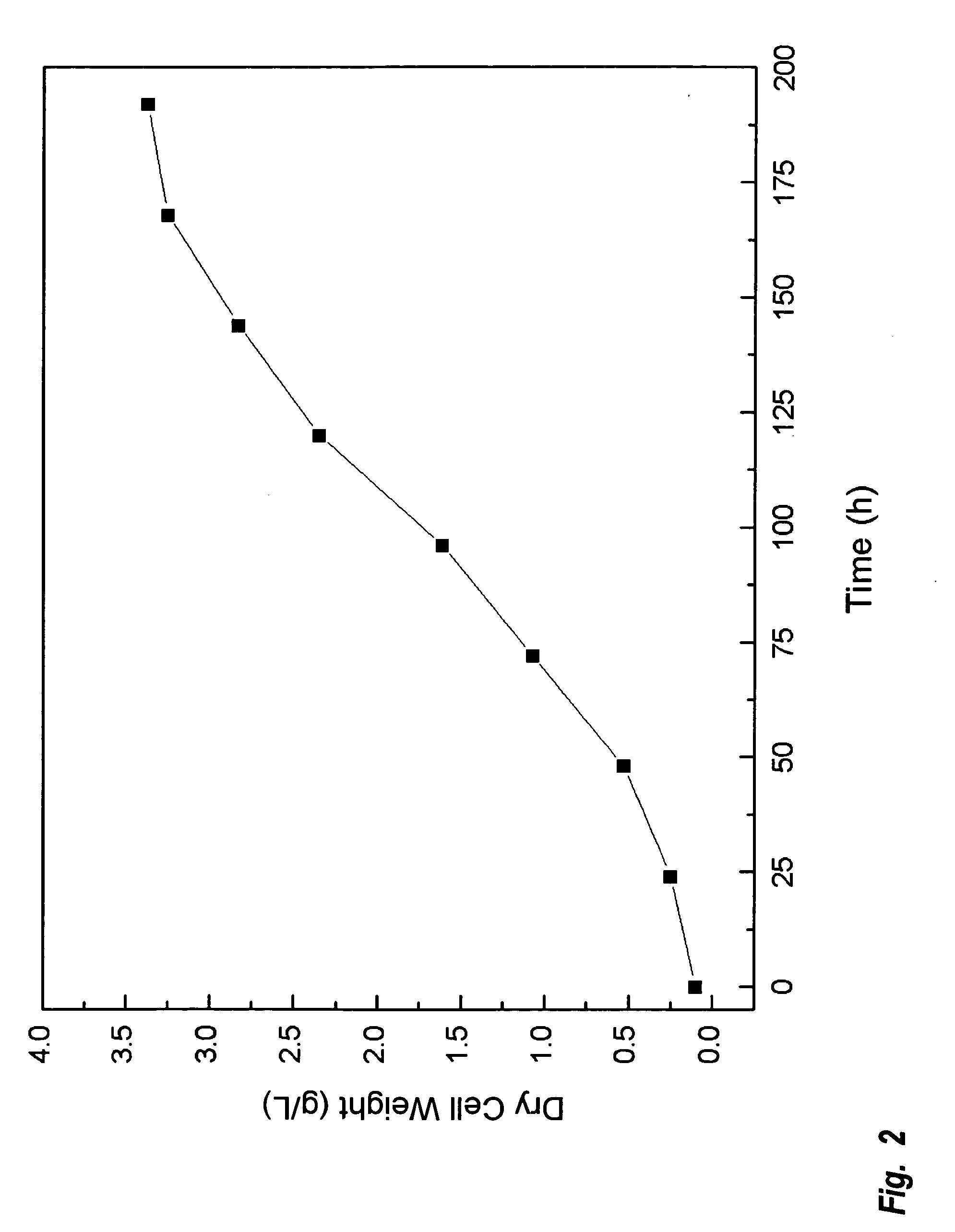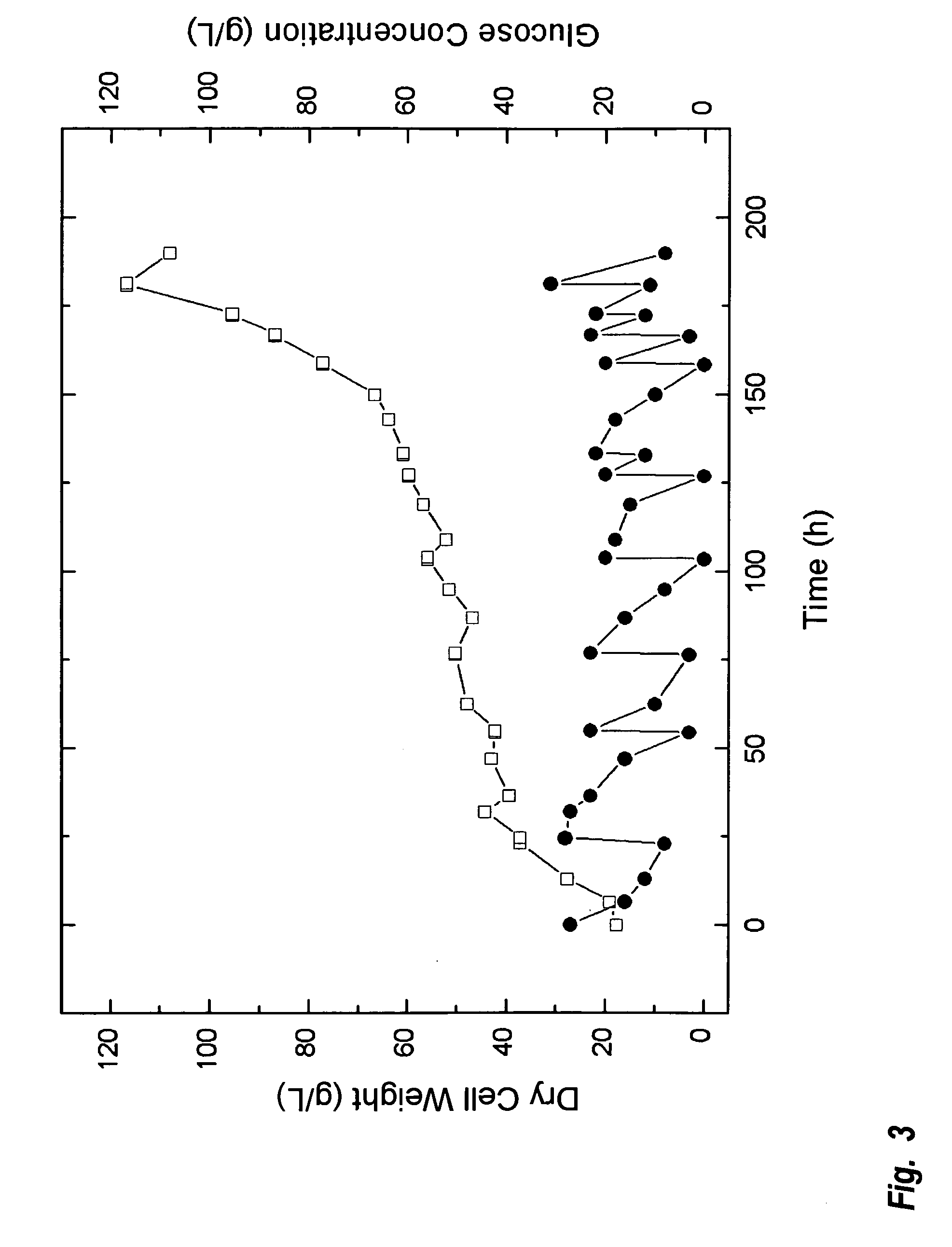Method for producing biodiesel from an alga
a biodiesel and alga technology, applied in biofuels, fuels, organic chemistry, etc., can solve the problems of not competing for agricultural land and fresh water, conventional oil/food crop-based biodiesel production systems cannot meet the growing demand for sustainable feedstock for biodiesel production, and the use of light is often limited
- Summary
- Abstract
- Description
- Claims
- Application Information
AI Technical Summary
Benefits of technology
Problems solved by technology
Method used
Image
Examples
example
Materials and Methods
[0069]Chlorella protothecoides, an oleaginous microalgae strain was purchased from Culture Collection of Algae in University of Texas (Austin, Tex.), which culture has been reserved in the Algal Bio-Energy Lab of the Department of Biological Science and Biotechnology at Tsinghua University for bio-energy research. The autotrophic medium for this strain has the following composition:[0070]KH2PO4: 0.6 g / L,[0071]K2HPO4: 0.4 g / L,[0072]MgSO4.7H2O: 0.4 g / L,[0073]FeSO4.7H2O: 1 mg / L,[0074]Glycine: 3 g / L,[0075]vitamin B1: 0.03 mg / L, and[0076]A5 trace mineral solution 1.5 ml / L, where the A5 trace element liquid contains H3BO3: 2.86 g / L; Na2MoO4.2H2O : 0.039 g / L; ZnSO4.7H2O: 0.222 g / L; MnCl2.4H2O: 1.81 g / L; CuSO4.5H2O : 0.074 g / L.
[0077]As illustrated in FIG. 1, a colony of chlorella grown on the agar plate is inoculated to a glass flask with an initial cell density 0.1 g / L. The flask is placed in an illumination incubator at 25° C. with circulating sterile air at a rate of...
PUM
| Property | Measurement | Unit |
|---|---|---|
| concentration | aaaaa | aaaaa |
| concentration | aaaaa | aaaaa |
| temperature | aaaaa | aaaaa |
Abstract
Description
Claims
Application Information
 Login to View More
Login to View More - R&D
- Intellectual Property
- Life Sciences
- Materials
- Tech Scout
- Unparalleled Data Quality
- Higher Quality Content
- 60% Fewer Hallucinations
Browse by: Latest US Patents, China's latest patents, Technical Efficacy Thesaurus, Application Domain, Technology Topic, Popular Technical Reports.
© 2025 PatSnap. All rights reserved.Legal|Privacy policy|Modern Slavery Act Transparency Statement|Sitemap|About US| Contact US: help@patsnap.com



